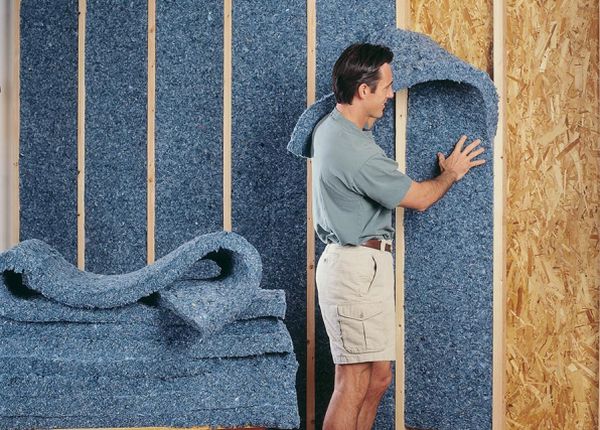We are living in a noisy, modern world. Noise can be found everywhere, it could be caused by loud music, nearby construction site, heavy traffic and crowded house. The problem becomes wide spread and noise pollution is considered as a serious problem. Stopping all the noise isn’t possible, but we could isolate ourselves from noise using latest proofing methods. In this case, we should look for ways to isolate ourselves from any noise. We should understand how the sound travels. Unlike light, sound needs a medium to travel, not only air, but also ceiling, floors and walls. In essence, sound is molecules that vibrate in specific waveforms.
When the sound is loud enough, we could feel that the ceiling and walls vibrate when we touch them. In this case , we should look for ways to stop unwanted noise in our house. This can be necessary when noise source is permanent, such as nearby heavy traffic, night life entertainment facilities and schools. Many houses have interior support structure made of joists, steel studs or wood. Rigid sheeting like particle board flooring and drywall could also transfer sound waves. A common way to reduce the transfer of sound is by insulating the ceiling, floor and wall. However, it may not stop sound transferred through flooring, joists, drywall and studs. We should also be aware that sound frequencies behave differently. Some methods may work well for high frequency noises, but not low frequency ones. As an example, air space insulation would work only for mid-range frequency.
It may be difficult to understand how noise can penetrate an insulated wall. This could happen when the drywall is directly nailed to wall studs. It means that sound waves will vibrate the drywall first and then they go to the stud. Finally, they will reach the other side of the drywall. People on the other side of the drywall will hear the sound when the air vibrates from the drywall. This is called coupling in soundproofing industry. One way to reduce the vibration is by using the de-coupling method. It means that we need to create an empty space between the studs and drywall. This method should significantly dampen the sound, because the vibration won’t be transmitted to the other side of drywall. Another thing that we should do is by installing the cushioning sheet under the drywall, under sub flooring, over floor joists and over the stud wall. If we combine the installation of cushioning sheet with air space insulation between floors and walls, we should be able to significantly reduce the transfer of low, mid-range and high sound frequencies.
With good quality caulk, we should be able to seal around the windows openings and outside door. This should reduce the sound transfer from room to room. We shouldn’t also forget installing duct liners in air exchange duct and in furnace; and seal outlets. These methods should go a long way in controlling the transfer of unwanted noises.










Comments are closed.